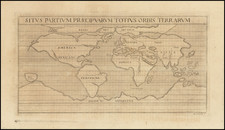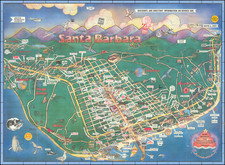Celebrating The First Descent To the Lowest Point In the Ocean -- The Trieste Exploration of the Challenger Deep of the Mariana Trench
Fascinating map of the ocean floor following the expedition of the Bathyscaph Trieste, illustrating the topography of the seabeds for "Young Explorers".
The ambitious expedition of the Bathyscaph Trieste in 1960 remains a hallmark of deep-sea exploration. Designed by the Swiss inventor Auguste Piccard, the Trieste, an Italian-built deep-diving research bathyscaphe, allowed humanity to probe the deepest part of the world's oceans, the Challenger Deep of the Mariana Trench.
The Mariana Trench is situated in the western Pacific Ocean, east of the Philippines and south of Japan, extending in a roughly crescent shape. The depth profile of the trench reveals a downward sloping channel that culminates in the Challenger Deep, the trench's deepest point. At approximately 10,911 meters, or 35,797 feet, it represents the nadir of the Earth's crust, deeper than Mount Everest is tall.
Beginning from Guam, the Trieste was launched into the trench. Guided by Jacques Piccard, Auguste Piccard's son, and U.S. Navy Lieutenant Don Walsh, the Trieste undertook a perilous journey into the unknown, sinking gradually into the cold, crushing pressures of the trench.
One would imagine the vessel's course as a vertical plunge, more akin to a lunar lander's descent than a conventional sea voyage. The Trieste descended at a rate of less than a meter per second, the route marked by the steady decrease in temperature and the increasing pressure that the bathyscaphe had to withstand.
After nearly five hours, the Trieste reached the bottom of the Challenger Deep. In this hitherto unvisited realm, where sunlight cannot penetrate and pressure exceeds 1,000 atmospheres, Piccard and Walsh spent around 20 minutes observing and documenting their surroundings, a surreal landscape of soft, diatomaceous ooze, and reporting the sighting of flatfish and shrimp-like creatures.
The return trajectory of the Trieste would mirror its descent, a sharp ascension cutting through the darkness of the abyss to the sunlit waters at the surface. Completing the round trip in just under nine hours, the Trieste surfaced successfully, signaling the completion of Project Nekton and marking the first successful manned mission to the ocean's deepest point.
Includes a chart of the marine world on the verso, focused on sea life and the relative depths at which they live.
















